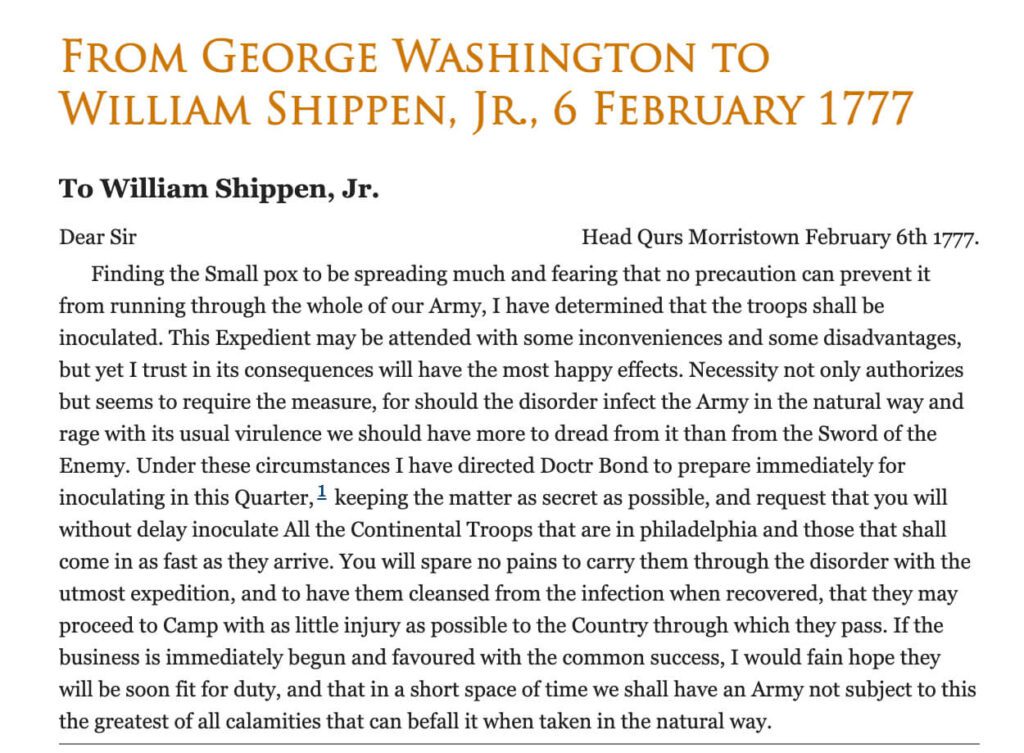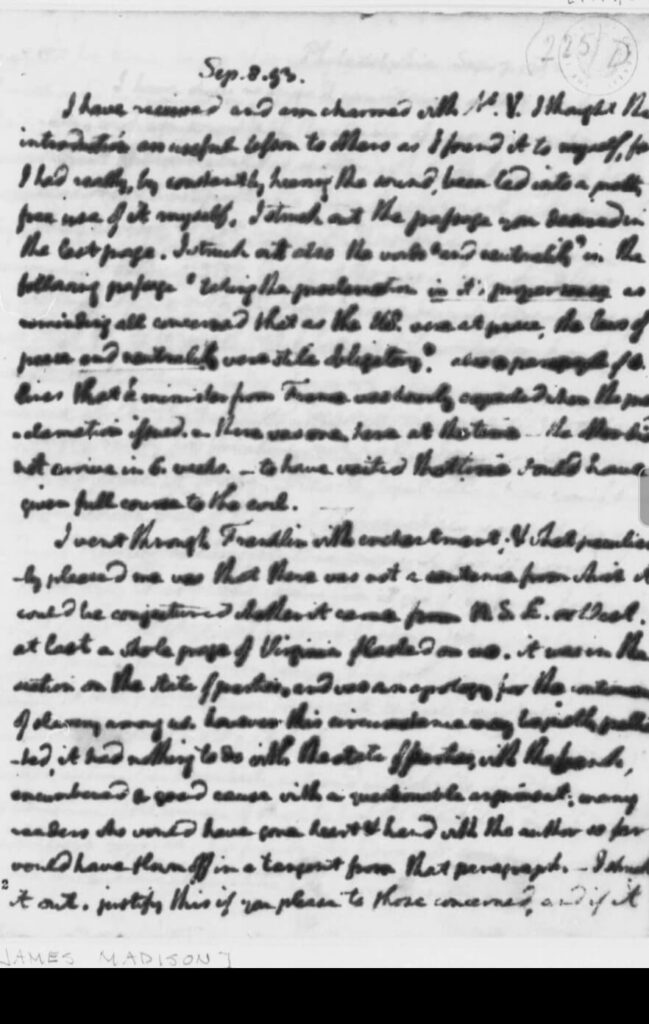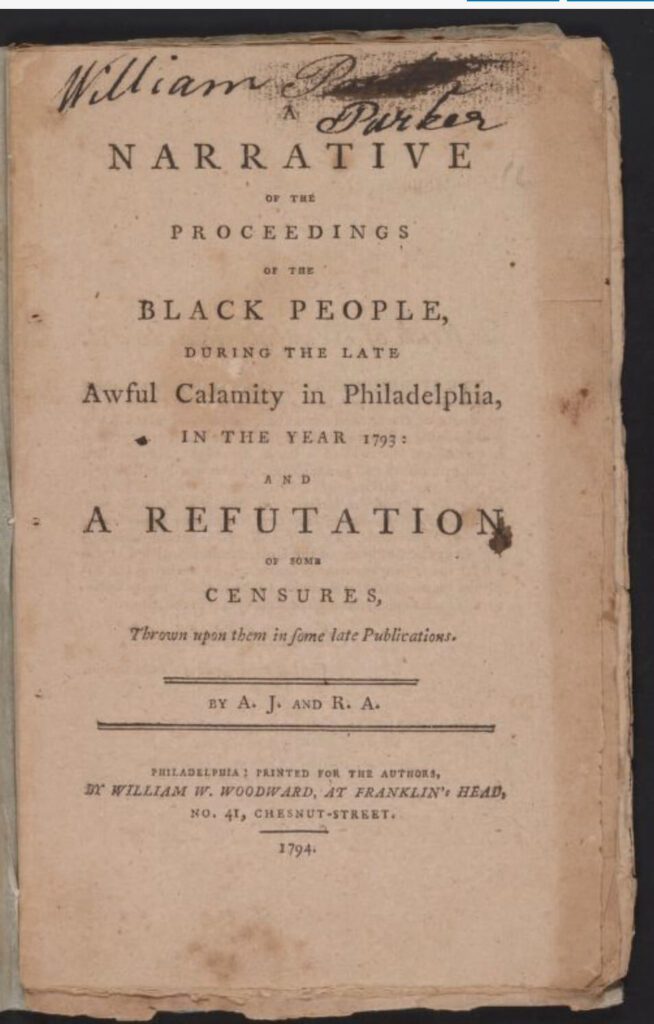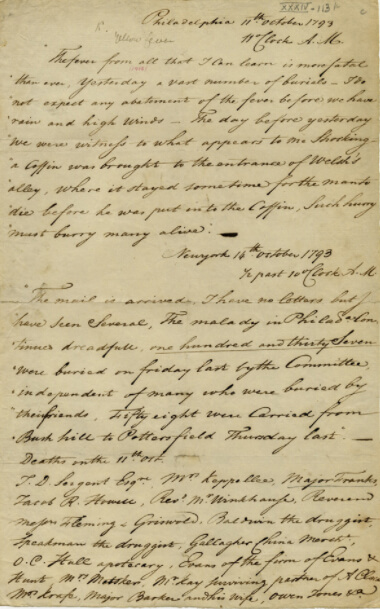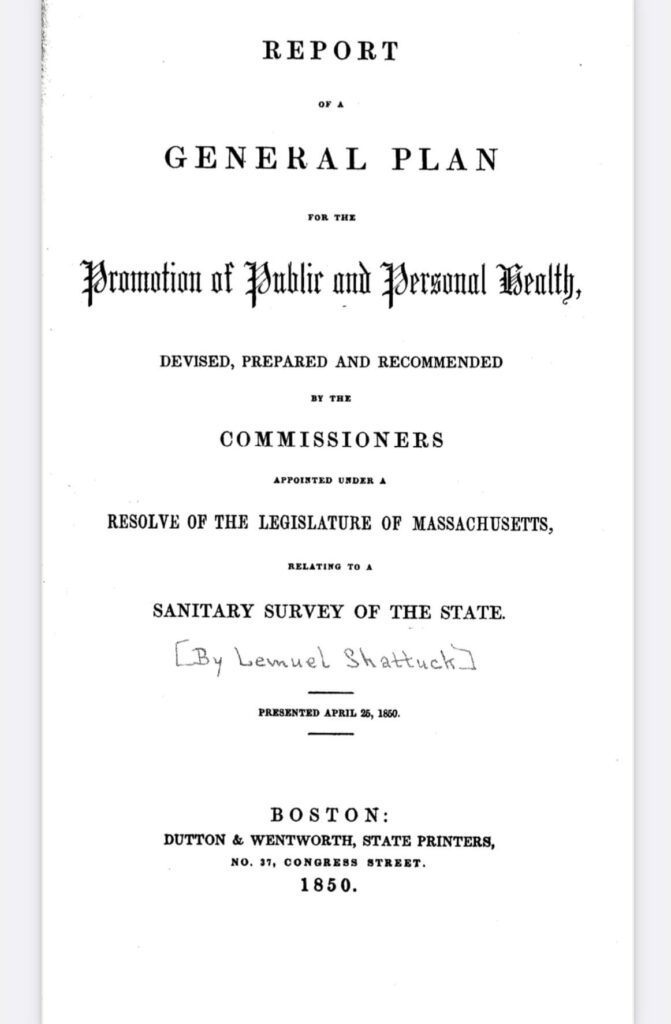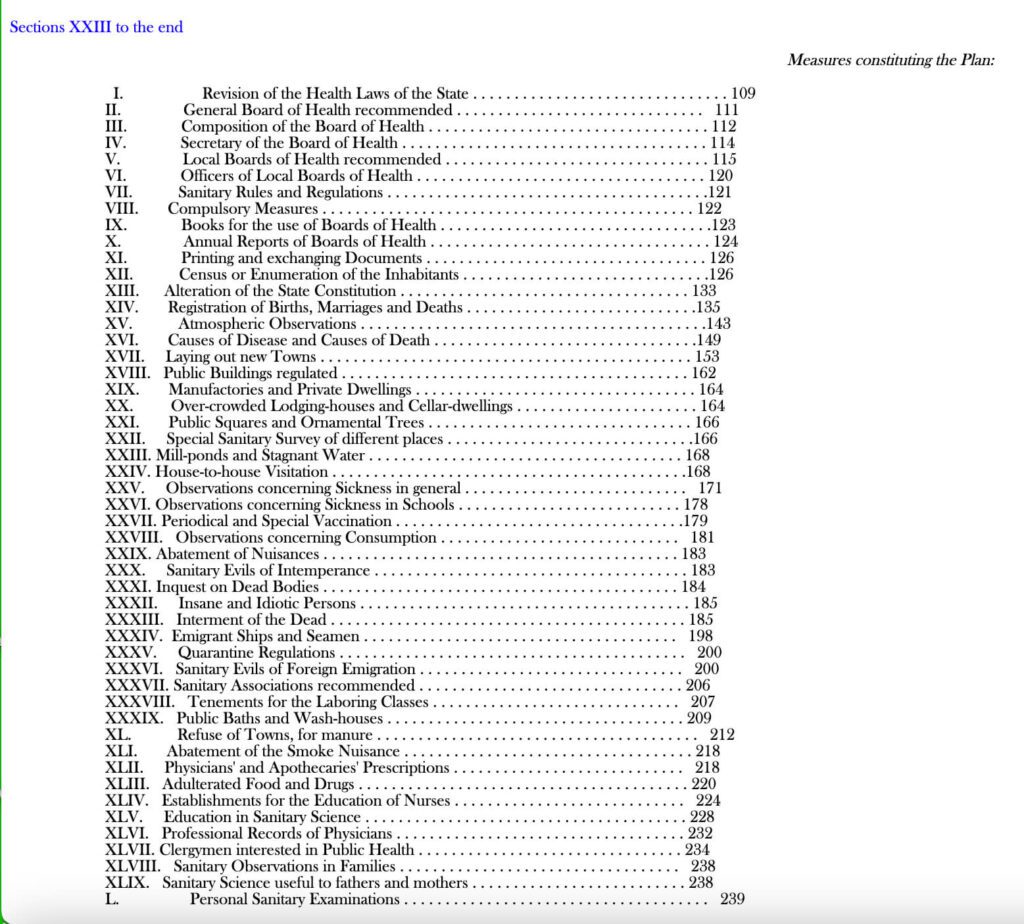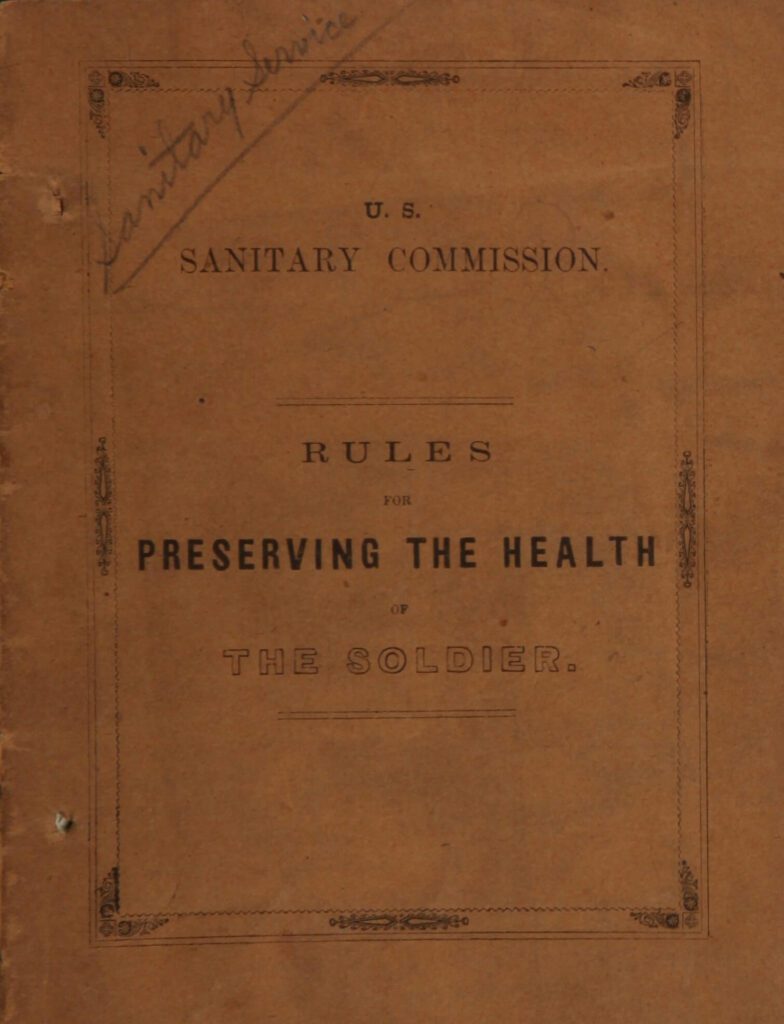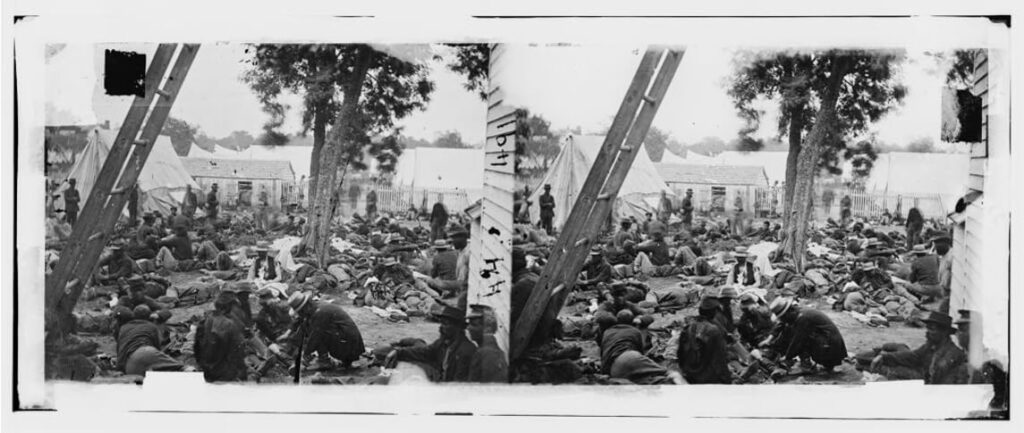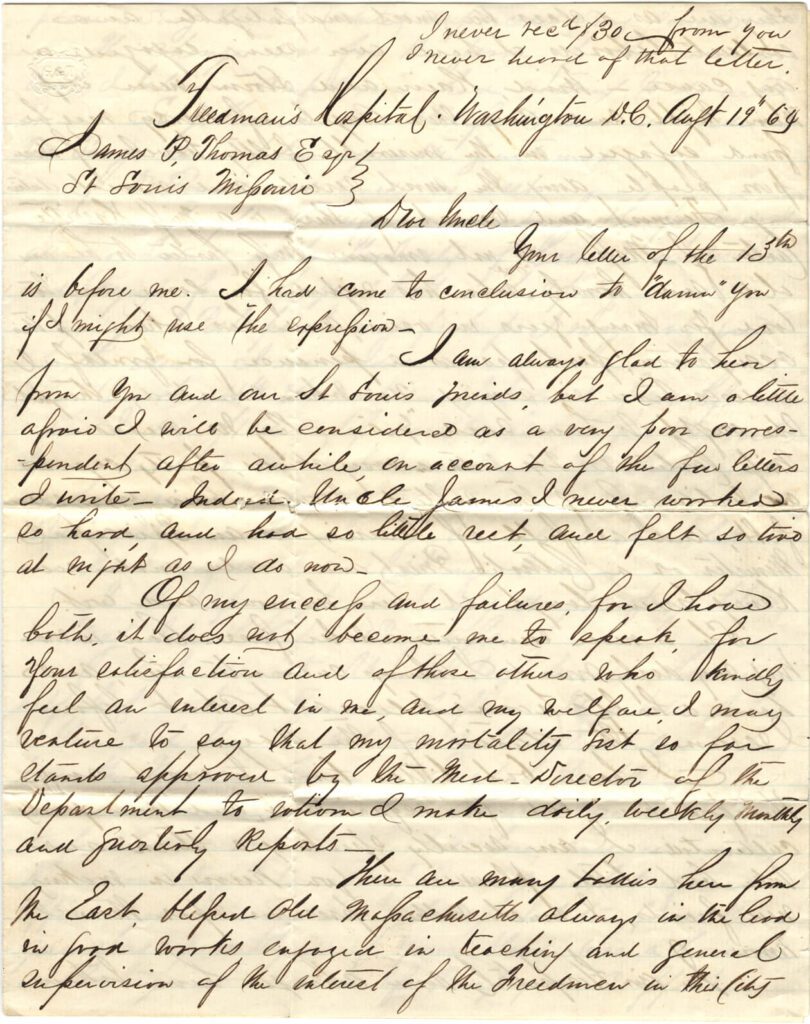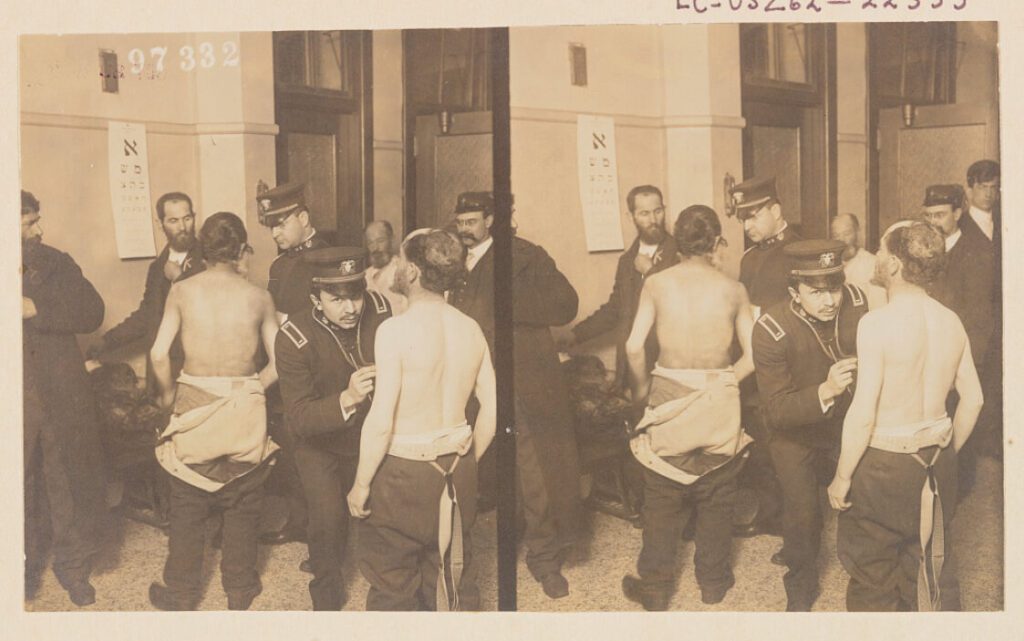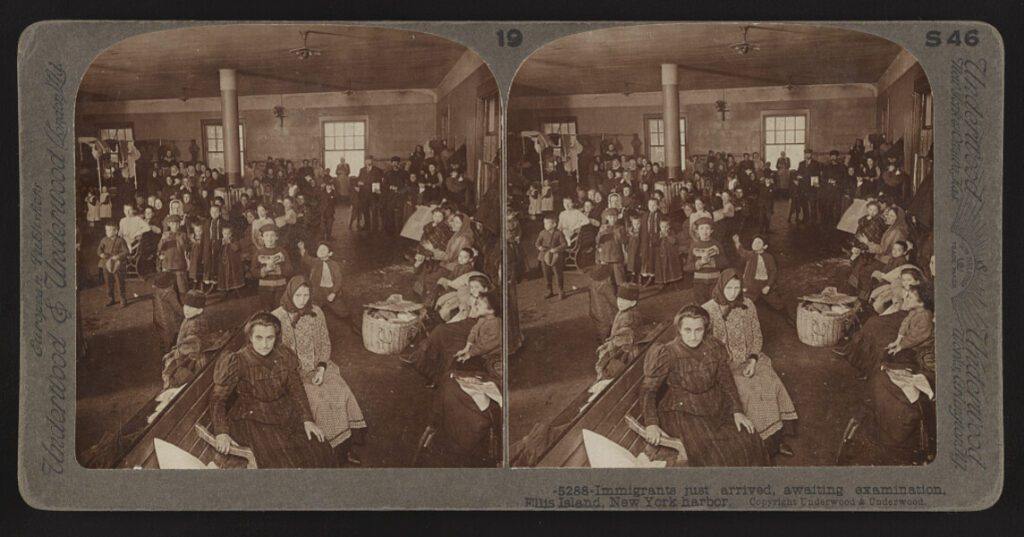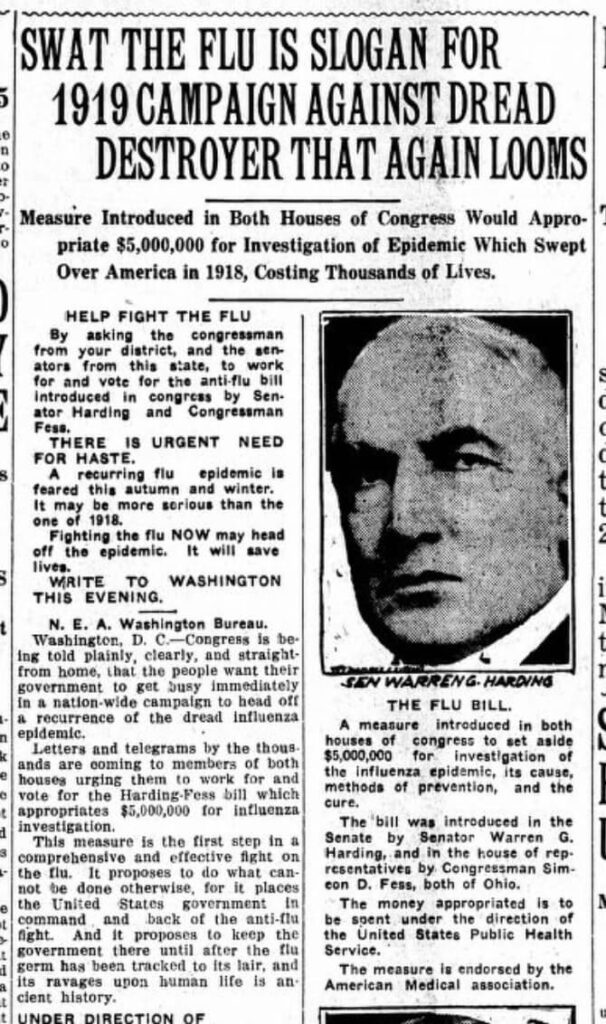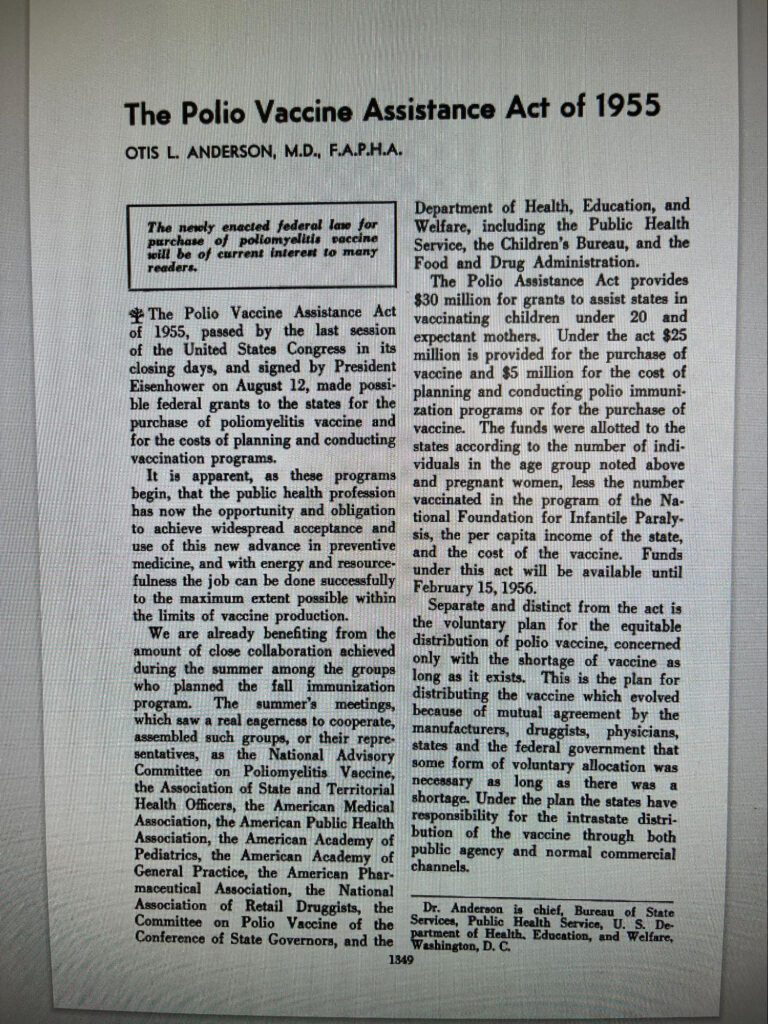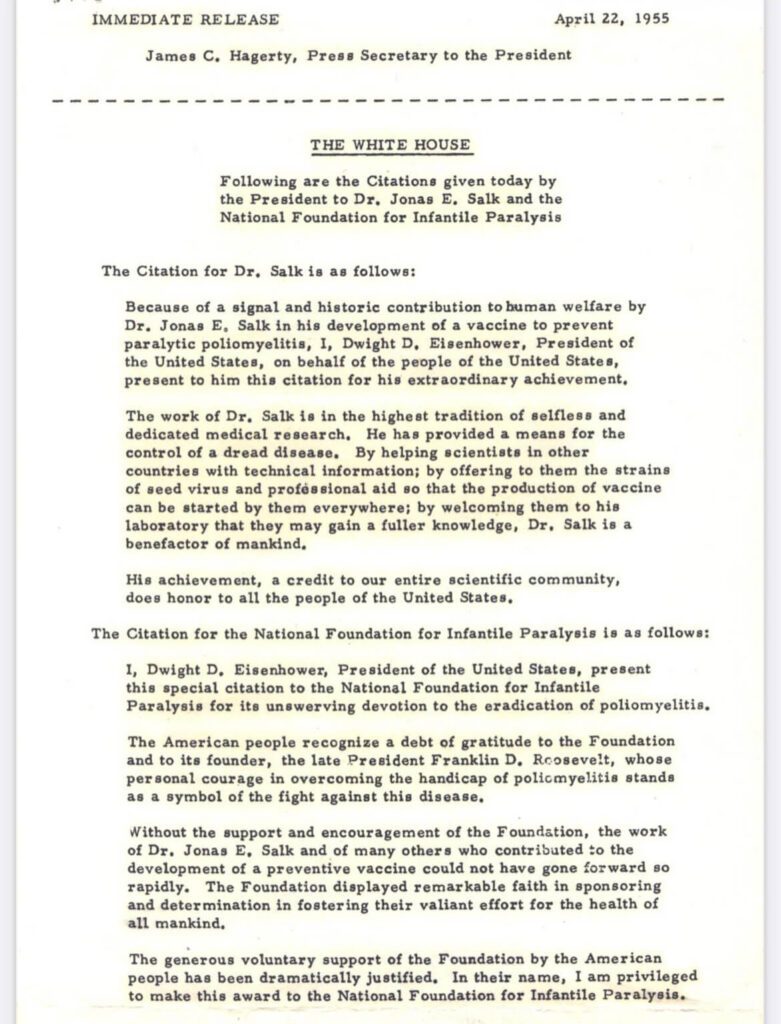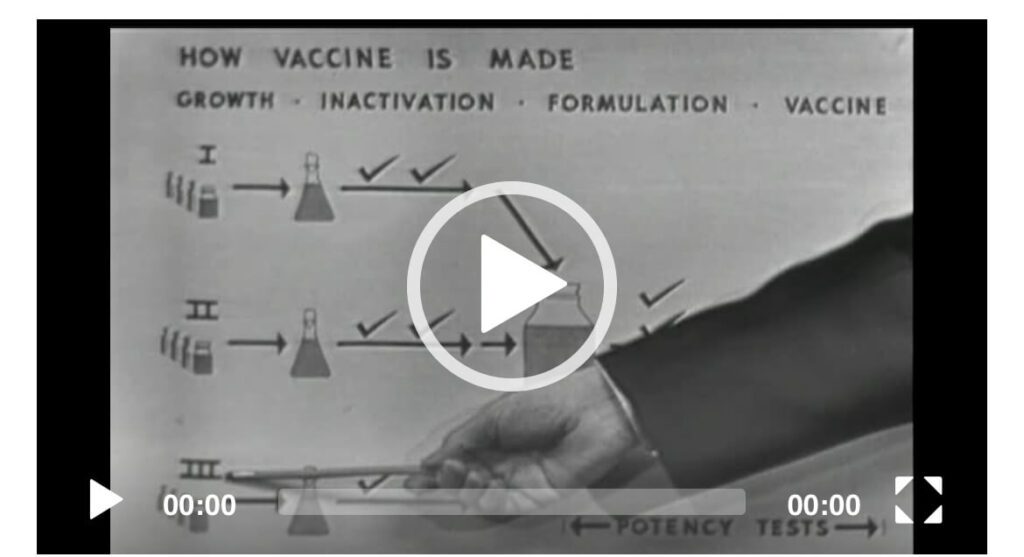The curated resources linked below are an initial sample of the resources coming from a collaborative and rigorous review process with the EAD Content Curation Task Force.
 Reset All
Reset All
A Visual History, 1940–1963: Political Cartoons by Clifford Berryman and Jim Berryman presents 70 political cartoons that invite students to explore American history from the early years of World War II to the civil rights movement. These images, by father-and-son cartoonists Clifford Berryman and Jim Berryman, highlight many significant topics, including WWII and its impact, the Cold War, the space race, the nuclear arms race, and the struggle for school desegregation.

The Roadmap



National Archives Center for Legislative Archives


In the years between 1764 and 1776, America truly became a nation: where before America had been a cluster of competing British colonies—with differing origins, goals, and policies—by 1776 colonists had forged a separate identity flexible enough to support not just revolution but nation building. By investigating the lives and events recorded in newspapers, official documents and personal correspondence from the MHS collection, students can immerse themselves in the past and discover the fears, friction and turmoil that shaped these tumultuous times.

The Roadmap

Massachusetts Historical Society


The Coronavirus Pandemic of 2020 has increased public awareness of the field of public health, which takes as its key goals “protecting and improving the health of people and their communities”(according to the CDC). In part because public health is so little understood or discussed in the U.S., government interventions to respond to the pandemic, including efforts to encourage masking and vaccinations, met with significant controversy and a wide variety of responses on the state and local levels. But the notion of government response to public health crises was not new in 2020; indeed, American public health measures including quarantine and inoculation predate the founding of the United States.
This Spotlight Kit covers a range of historic events in the realm of public health, including (but not limited to) Yellow Fever in 1793, public health crises of the Civil War, the 1918 flu epidemic, and the development of the polio vaccine in 1955. The documents herein reveal perennial questions about what the responsibility of the government is to its citizens’ health and what the limitations are to the public will for government intervention.
The resources in this spotlight kit are intended for classroom use, and are shared here under a CC-BY-SA license. Teachers, please review the copyright and fair use guidelines.



The Roadmap

















- Primary Resources by Era/DateEighteenth Century (4)Nineteenth Century (5)Early Twentieth Century (including 1918 Flu Pandemic) (4)Later Twentieth Century (5)
- All 18 Primary ResourcesFrom George Washington to William Shippen, Jr. (1777)
During the Revolutionary War, according to military historians, approximately 90% of deaths among soldiers were the result of the spread of smallpox. As a result, Washington decided to mandate the vaccination of the troops – a process more dangerous and complicated in that era than our public vaccination campaigns today.
CitePrintShare“From George Washington to William Shippen, Jr., 6 February 1777,” Founders Online, National Archives, https://founders.archives.gov/documents/Washington/03-08-02-0281. [Original source: The Papers of George Washington, Revolutionary War Series, vol. 8, 6 January 1777 – 27 March 1777, ed. Frank E. Grizzard, Jr. Charlottesville: University Press of Virginia, 1998, p. 264.]
Thomas Jefferson to James Madison (1793)TranscriptThomas Jefferson to James Madison, 1793: “I think there is rational danger, but that I had before announced that I should not go till the beginning of October, & I do not like to exhibit the appearance of panic. Besides that I think there might serious ills proceed from there being not a single member of the administration in place. Poor Hutcheson dined with me on Friday was sennight, was taken that night on his return home, & died the day before yesterday.”
In this letter, Thomas Jefferson describes how the yellow fever is harming countless people, even those in the government, yet no one seems to know what can be done. Alexander Hamilton is ill, others are sick or dying, and Jefferson writes about avoiding the appearance of “panic” for the public.
1The resources in this spotlight kit are intended for classroom use. Teachers, if your use will be beyond a single classroom, please review the copyright and fair use guidelines.CitePrintShareThomas Jefferson to James Madison, September 8, with Fragment Copy. -09-08, 1793. Manuscript/Mixed Material. Retrieved from the Library of Congress, accessed from the Library of Congress on March 27, 2022, at www.loc.gov/item/mtjbib007979/.
Note: If you select to download the PDF below the image, you can see a transcript of the letter.
A Narrative of the Proceedings of the Black People, during the Late Awful Calamity in Philadelphia, in the Year 1793TranscriptA narrative of the proceedings of the black people, during the late awful calamity in Philadelphia, in the year 1793:
“We feel ourselves sensibly aggrieved by the censorious epithets of many, who did not render the least assistance in the time of necessity, yet are liberal of their censure of us, for the prices paid for our services, when no one knew how to make a proposal to any one they wanted to assist them. At first we made no charge but left it to those we served in removing their dead, to give what they thought fit–we set no price, until the reward was fixed by those we had served. After paying the people we had to assist us, our compensation is much less than many will believe.” (pp. 7-8)
This primary source reflects the incredible help that African Americans provided during Philadelphia’s yellow fever epidemic of 1793. Those who helped recount speaking with the mayor about what could be done and working with the government of the city in order to help those in need. Later in the document, the writers recount that they asked for pay for their many services given during this time of illness and need, yet some citizens turned against them.
CitePrintShareJones, Absalom, et al. A narrative of the proceedings of the black people, during the late awful calamity in Philadelphia, in the year: and a refutation of some censures thrown upon them in some late publications. Philadelphia: Printed for the authors, by William W. Woodward, 1794. Pdf. Accessed March 27, 2022 from the Library of Congress at www.loc.gov/item/02013737/
Note: This is a 32 page primary source document in its original form. If you wish to access a transcript of portions of this document in Microsoft Word form, that can be accessed from the Texas State University Library Guides; the citation for this is as follows:
Absolom Jones and Richard Allen, “On Black Philadelphians’ Conduct During the Yellow Fever Epidemic of 1793-1794,” ExplorePAhistory.com, accessed March 27, 2022 fro the Texas State University Library Guides at https://explorepahistory.com/odocument.php?docId=1-4-169.
“Account of the yellow fever outbreak in Philadelphia, October 11-14, 1793” (1793)“Account of the yellow fever outbreak in Philadelphia, October 11-14, 1793”TranscriptPhiladelphia 11th october 1793 11 OClock A.M. “The fever from all that I can learn is more fatal than ever, yesterday a vast number of burials – I do not expect any abatement of the fever before we have rain and high winds – The day before yesterday we were witness to what appears to me Shocking – a Coffin was brought to the entrance of Welsh’s alley, where it stayed sometime for the man to die before he was put into the Coffin, Such hurry must bury many alive.”
New York 14th October 1793 ½ past 10 OClock A.M. “The mail is arrived, I have no letters but I have seen Several, The malady in Philada continues dreadful, one hundred and thirty Seven were buried on friday last by the Committee independent of many who were buried by their friends, Fifty eight were Carried from Bush hill to Pottersfield Thursday last.—”
The federal government left Philadelphia in 1793 to avoid the yellow fever epidemic; the federal government’s response to the health concern was to leave the city. This letter is from Secretary of War Henry Knox and relates to the government weighing whether or not it was safe for them to go back to Philadelphia (students may need to be reminded that before Washington, DC, the federal government met in Philadelphia).
CitePrintShare“Account of the yellow fever outbreak in Philadelphia, October 11-14, 1793”, from the Gilder Lehrman Collection. Accessed on March 27, 2022 from https://www.gilderlehrman.org/history-resources/spotlight-primary-source/reports-yellow-fever-epidemic-1793
Note: A transcript of this letter is also available from this same page cited above.
The Shattuck Report (1850)Known as the Shattuck Report and done with the Massachusetts Sanitary Commission in 1850, this was the first in-depth look at public health. It focused on health and living conditions in Boston but had far-reaching impacts in bringing public health to the forefront of important national issues. According to many, this was the first attempt to get a public health code in place in a major American city. Shattuck’s report came at a time when the government was doing little to help immigrants arriving to the US, low-wage workers were living in unsanitary conditions, the working poor received almost no government help, and healthcare was nearly nonexistent for those living in poverty. The report revealed the need for public health codes and government intervention; according to LSU Biotech Law, “This report is one of the fundamental documents in public health in the United States. It is the first systematic use of birth and death records and other demographic data to describe the health of a population. Its recommendations became the foundation of the sanitation movement in the United States. . . “ This report also outlines technology as a necessity for government intervention in public health, mentioning everything from sanitation systems to sanitation laws.
CitePrintShareHistoric Public Health Books: “The Shattuck Report: LEMUEL SHATTUCK - REPORT OF A GENERAL PLAN FOR THE PROMOTION OF GENERAL AND PUBLIC HEALTH DEVISED, PREPARED AND RECOMMENDED BY THE COMMISSIONERS APPOINTED UNDER A RESOLVE OF THE LEGISLATURE OF MASSACHUSETTS, RELATING TO A SANITARY SURVEY OF THE STATE. (1850)”; accessed from LSU Biotech Law on March 27, 2022 at https://biotech.law.lsu.edu/cphl/history/books/sr/
Note: This is a transcript of the entire book by Lemuel Shattuck. From this link provided above, you can select to view any page on the original primary source book from 1850.
“Rules for preserving the health of the soldier” (1861)“Rules for preserving the health of the soldier” (1861)Transcript“To secure by all possible means the health and efficiency of our troops now in the field, and to prevent unnecessary disease and suffering. . .. Every officer and soldier should be carefully vaccinated with fresh vaccine matter, unless already marked by small-pox.”
This book outlines health advice for soldiers; it was published by the federal government under the US Sanitary Commission during the Civil War, at a time when the Union Army needed government assistance to keep soldiers healthy. The work also discusses everything from diet to sanitation.
CitePrintShare“Rules for preserving the health of the soldier”, provided by the U.S. National Library of Medicine Digital Collections; accessed March 27, 2022, from https://collections.nlm.nih.gov/bookviewer?PID=nlm:nlmuid-101201682-bk.
If you wish to read a transcript of portions of this work, you can use the following source:
Teach US History.org, “Rules for Preserving the Health of the Soldier”, accessed March 27, 2022 at https://www.teachushistory.org/civil-war/resources/rules-preserving-health-soldier#:~:text=Every%20officer%20and%20soldier%20should,the%20exigencies%20of%20service%20permit.
Union field hospital after the battle of June 27 (1862)This photograph shows a Union Civil War hospital in June 1862. This photograph could be used in conjunction with the “Rules for the preserving the health of the soldier” (the primary source listed above) to showcase some of the measures taken for the health of soldiers.
CitePrintShareGibson, James F, photographer. Savage Station, Virginia. Union field hospital after the battle of June 27. June. Photograph. Retrieved from the Library of Congress, www.loc.gov/item/2018671740/.
Letter from Dr. John H. Rapier, Jr. to his uncle (1864)Transcript“I drew $100 less war tax $2.50 for Medical Services rendered the U.S. Government. … I must tell you coloured men in the U.S. Uniform are much respected here, and in visiting the various Departments if the dress is that of an Officer, you receive the military salute from the ground as promptly as if your blood was a Howard or Plantagenent instead of a Pompey or Cuffee’s. … I had decided not to wear the uniform but I have altered my mind—and I shall appear hereafter in full dress gold lace, pointed hat, straps and all. Mr. Fred Douglass spoke here last night to an immense audience and today the President sent for him to visit him in the Capitol.”
This four-page August 19, 1864 letter is from African American surgeon Dr. John H. Rapier, Jr. In the letter, Dr. Rapier recounts being paid by the US government for his medical services. This primary source shows the important role of African American medical practitioners in the Civil War, and makes reference to Frederick Douglass being summoned by the President and meeting with Dr. Rapier thereafter.
CitePrintShareLetter from Dr. John H. Rapier, Jr. to his uncle James P. Thomas, Esq., St. Louis, Missouri, from Freedmen's Hospital, Washington, D.C., August 19, 1864 (transcript available). Courtesy Moorland-Spingarn Research Center, Howard University. Accessed March 27, 2022 from the NIH US National Library of Medicine at https://www.nlm.nih.gov/exhibition/bindingwounds/education/onlineactivities.html
Hygienic Laboratory at the Marine Hospital, Staten Island, New York (1887-1891)These photographs are from the Marine Hospital at Staten Island, New York, where the Hygienic Laboratory was established in 1887. The tents are for people with tuberculosis; Joseph James Kinyoun was the Assistant Surgeon at this location and urged isolation as a way to combat tuberculosis. According to the NIH, this Marine Hospital “marked the beginning of the National Institutes of Health and laid the groundwork for government-supported scientific research in the United States”. A major purpose of this location was to look for diseases among immigrants arriving from Europe, at a time when anti-immigrant beliefs were already a problem in the US.
CitePrintShareNational Institute of Allergy and Infectious Diseases (NIH), “The Hygienic Laboratory - Abutment”, access from the NIH on March 27, 2022 at https://www.niaid.nih.gov/about/joseph-kinyoun-indispensable-man-hygienic-laboratory
Photographs from Ellis Island (1907)Physicians examining a group of Jewish immigrants (1907)Immigrants just arrived, awaiting examination, Ellis Island, New York harbor (1907)This 1907 photograph shows immigrants being examined at Ellis Island. The US government required medical examinations upon arrival in the US. It could be important to point out public perceptions of immigrants at this time in American history, and how anti-immigrant beliefs were influencing government decisions about medicine and health.
CitePrintShareUnderwood & Underwood, Copyright Claimant. Physicians examining a group of Jewish immigrants. Photograph. Access March 27, 2022 from the Library of Congress at www.loc.gov/item/2012646350/
Underwood & Underwood. Immigrants just arrived, awaiting examination, Ellis Island, New York harbor. [London: underwood & underwood, european publishers, ltd., between 1870 and 1920] Photograph. Accessed March 27, 2022 from the Library of Congress at www.loc.gov/item/2017660810/
Birmingham, Alabama Board of Education School Board Minutes (1918)In terms of government public health initiatives over time, local governments are an important part of that history. This primary source is from Birmingham, Alabama’s School Board minutes from December 1918, in which the possibility of closing schools due to the flu epidemic. The document explains that doctors of the Committee of Health have been consulted on the issue as well. This could be a useful primary source for studying local government decisions in public health issues.
CitePrintShareBirmingham, Alabama Board of Education December 3, 1918 School Board Minutes. Published: Ann Arbor, Michigan: Michigan Publishing, University Library, University of Michigan. Courtesy of: Department of Archives and Manuscripts, Birmingham Public Library, Birmingham, AL. Accessed March 29, 2022 from the Influenza Encyclopedia, from the University of Michigan Center for the History of Medicine and Michigan Publishing, University of Michigan Library Influenza Archive, at
“Swat the Flu…”: The Bismarck Tribune (1919)This 1919 newspaper article has the headline “Swat the Flu is Slogan for 1919 Campaign Against Dread Destroyer that Looms Again: Measure Approved in Both Houses of Congress Would Appropriate $5,000,000 for Investigation of Epidemic Which Swept Over America in 1918, Costing Thousands of Lives”. The article details government actions regarding public health during the 1918-1919 flu epidemic.
CitePrintShareThe Bismarck tribune. [volume] (Bismarck, N.D.), 29 July 1919. Chronicling America: Historic American Newspapers. Lib. of Congress. Accessed March 29, 2022 from the Library of Congress at https://chroniclingamerica.loc.gov/lccn/sn85042243/1919-07-29/ed-1/seq-1/
President Coolidge, Address at the Annual Session of the American Medical Association (1927)This address, given by President Coolidge to the American Medical Association, speaks broadly to the role of the field of public health and the trust he feels society must place in science and medicine.
President Calvin Coolidge, Address at the Annual Session of the American Medical Association, Washington, D.C., May 17, 1927
Ladies and Gentlemen:“...Those who have witnessed the general paralysis which prevails when even a moderate epidemic breaks out can not help but realize that one of the most important factors of our everyday existence is the public health, which has come to be dependent upon sanitation and the medical profession. We are constantly in receipt of the beneficial activities of these efforts in the disposition of waste, the water we drink, the food we eat, and even in the air we breathe. This great work is carried on partly through private initiative, partly through Government effort, partly by a combination of these two working in harmony with the science of chemistry, of engineering, and of applied medicine. In its main aspects it is preventive, but in a very large field it is remedial. Without this service our large centers of population would be overwhelmed and dissipated almost in a day and the modern organization of society would be altogether destroyed. The debt which we owe to the science of medicine is simply beyond computation or comprehension….
If there is any one thing which the progress of science has taught us, it is the necessity of an open mind. Without this attitude very little advance could be made. Truth must always be able to demonstrate itself. But when it has been demonstrated, in whatsoever direction it may lead, it ought to be followed.”
CitePrintShare“Address at the Annual Session of the American Medical Association, Washington, D.C. | The American.” The American Presidency Project, https://www.presidency.ucsb.edu/documents/address-the-annual-session-the-american-medical-association-washington-dc.
The Polio Vaccine Assistance Act of 1955This 1955 primary source is about the US government’s Polio Vaccine Assistance Act and the US government’s public health efforts to fight polio. This two-page document explains how states will receive money for vaccination programs and distribute the vaccine, among other details. Notice the first page calls this a “new advance in preventive medicine”.
CitePrintShareAJPH: A Publication of the American Public Health Association, Otis L. Anderson, MD, F.A.P.H.A, “The Polio Vaccine Assistance Act of 1955”, October 1955. Accessed March 27, 2022 from the AJPH at https://ajph.aphapublications.org/doi/pdf/10.2105/AJPH.45.10.1349#:~:text=The%20Polio%20Vaccine%20Assistance%20Act%20of%201955%2C%20passed%20by%20the,of%20planning%20and%20conducting%20vaccination
White House Press Release on the Salk Polio Vaccine (1955)This 1955 White House press release details President Eisenhower’s honoring Jonas Salk with a “citation for his extraordinary achievement” in developing a polio vaccine. Eisenhower, in this press release, details the massive efforts the National Foundation for Infantile Paralysis has taken to work towards a polio vaccine. President Franklin D. Roosevelt’s own struggle with polio, and the gratitude of America as a whole, are also discussed.
CitePrintShareWhite House press release with text of citations given by the President to Dr. Jonas E. Salk and the National Foundation for Infantile Paralysis, April 22, 1955 [DDE's Records as President, Official File, Box 511, 117-I-1 Salk Polio Vaccine (8); NAID #12166355]. Accessed March 29, 2022 from the Dwight D. Eisenhower Presidential Library at https://www.eisenhowerlibrary.gov/sites/default/files/research/online-documents/salk/salk-c.pdf
Public Health Video (1955)This Library of Congress 14 minute and 35 second video is from 1955 and details the efforts made to fight polio. From the NBC Television Collection, this primary source allows students to watch a primary source video that details items such as how vaccines are made, including the safety of vaccines. The description reads: “HEW Secretary Oveta Culp Hobby and Surgeon General Leonard Scheele talk about the Salk polio vaccine and assuage concerns about its safety”. (HEW is “Health, Education, and Welfare”.)
CitePrintShareScheele, Leonard Andrew, et al. A Special Report on Polio. 1955. Video. Accessed March 29, 2022 from the Library of Congress at www.loc.gov/item/mbrs00056792/
Special Message to the Congress on the Nation's Health (1964)This address to Congress delineates a public health agenda that includes numerous measures for increasing both the national and international commitments to health infrastructure and access. In doing so, it connects issues of public health and access to health care to President Johnson’s War on Poverty.
President Lyndon B. Johnson, Special Message to the Congress on the Nation's Health (1964)
To the Congress of the United States:The American people are not satisfied with better-than-average health. As a Nation, they want, they need, and they can afford the best of health:
--not just for those of comfortable means.
--but for all our citizens, old and young, rich and poor.
In America,
--There is no need and no room for second-class health services.
...Too many Americans still are cut off by low incomes from adequate health services. Too many older people are still deprived of hope and dignity by prolonged and costly illness. The linkage between ill-health and poverty in America is still all too plain.
In its first session, the 88th Congress made some important advances on the health front:
--It acted to increase our supply of physicians and dentists.
--It began a Nation-wide attack on mental illness and mental retardation.
--And it strengthened our efforts against air pollution.
But our remaining agenda is long, and it will be unfinished until each American enjoys the full benefits of modern medical knowledge.
Part of this agenda concerns a direct attack on that particular companion of poor health--poverty. Above all, we must see to it that all of our children, whatever the economic condition of their parents, can start life with sound minds and bodies.
My message to the Congress on poverty will set forth measures designed to advance us toward this goal.
In today's message, I present the rest of this year's agenda for America's good health.
CitePrintShareJohnson, Lyndon B. “Special Message to the Congress on the Nation's Health.” The American Presidency Project, 10 February 1964, https://www.presidency.ucsb.edu/documents/special-message-the-congress-the-nations-health.
Surgeon General's Report on Acquired Immune Deficiency Syndrome (1987)The Reagan Administration was slow to respond to the initial emergence and spread of AIDS (Acquired Immunodeficiency Syndrome). Political activism, both within and outside of the LGBTQ community, pushed for more government support, resources, and attention to the disease and its victims. As a National Library of Medicine profile of Surgeon General C. Everett Koop explains, “ In 1986, he was finally authorized to issue a Surgeon General's report on AIDS. In 1988, he mailed a congressionally-mandated information brochure on AIDS to every American household.”
- Everett Koop, Surgeon General's Report on Acquired Immune Deficiency Syndrome (1987):
“Every person can reduce the risk of exposure to the AIDS virus through preventive measures that are simple, straightforward, and effective. However, if people are to follow these recommended measures-to act responsibly to protect themselves and others-they must be informed about them. That is an obvious statement, but not a simple one. Educating people about AIDS has never been easy.
From the start, this disease has evoked highly emotional and often irrational responses. Much of the reaction could be attributed to fear of the many unknowns surrounding a new and very deadly disease. This fear was compounded by personal feelings regarding the groups of people primarily affected-homosexual men and intravenous drug abusers. Rumors and misinformation spread rampantly and became as difficult to combat as the disease itself. It is time to put self-defeating attitudes aside and recognize that we are fighting a disease-not people. We must control the spread of AIDS, and at the same time offer the best we can to care for those who are sick.”
CitePrintShareKoop, CE. “Surgeon General's report on acquired immune deficiency syndrome.” NCBI, 1987, https://www.ncbi.nlm.nih.gov/pmc/articles/PMC1477712/.
Education for American Democracy


This lesson plan explores the effects of the Great Depression in Arkansas through the use of primary and secondary sources.
The Roadmap



Arkansas Digital Archives
In this activity, students will use a variety of resources to differentiate between the popular memory of the March and Washington and what actually happened.

The Roadmap



Albert Shanker Institute

In this lesson, students will analyze the visual and literary visions of the New World that were created in England during the early phases of colonization, and the impact they had on the development of the patterns of colonization that dominated the early 17th century. This lesson will enable students to interact with written and visual accounts of this critical formative period at the end of the 16th century, when the English view of the New World was being formulated, with consequences that we are still seeing today.

The Roadmap




National Endowment for the Humanities


This lesson provides students with a variety of resources to help them understand how and why attitudes changed regarding women's suffrage.

The Roadmap


Annenberg Classroom

During the Cold War, the United States took on a new level of responsibility for defending the Free World. New global responsibilities and emerging rivalries abroad presented unprecedented opportunities and dangers, while domestic subversion threatened to undercut American institutions and values, and technological developments unleashed ever more deadly weapons. Political cartoons from a major daily newspaper show the concerns of the era as they were experienced by the public.

The Roadmap



National Archives Center for Legislative Archives


This learning resources investigates the removal of Indigenous nations in the South East during Andrew Jackson's presidency. Students will analyze the impact of the Trail of Tears on Indigenous people and contemporary issues that Indigenous people face today.
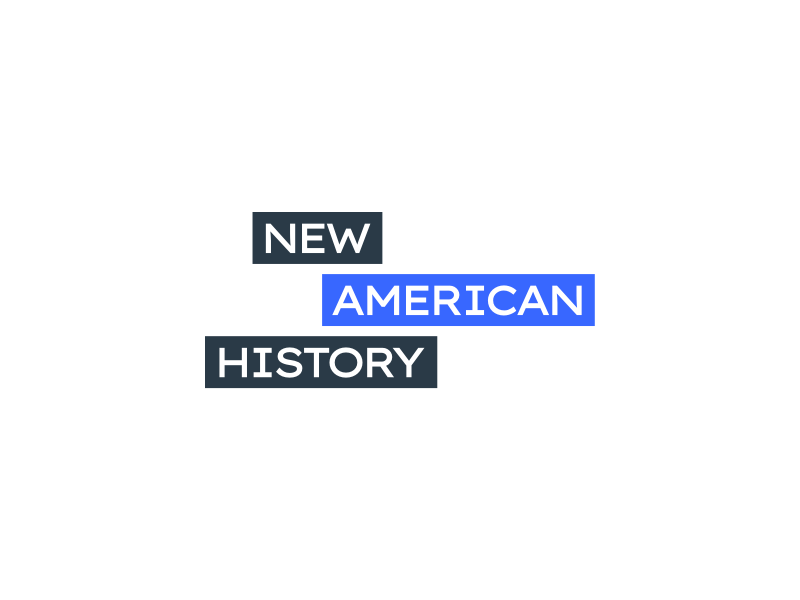
The Roadmap



New American History

Students will learn about Washington Territory Governor Isaac Stevens’ historic 1855 campaign to draft treaty agreements with Washington Territory Indians. Portrait images, mostly by 19th century artist and interpreter Gustav Sohon, and corresponding biographies with quotations, will become a lens for them to understand that multiple points of view affect the course of history.
The Roadmap




Washington State Historical Society
This learning resource uses geospatial technology to understand what states were free and what states still had enslavement. Students will use the maps to visualize the function of the Underground Railroad and what paths were traveled by enslaved people to freedom.

The Roadmap




Esri


Throughout United States history, women have consistently fought for better working conditions, fair labor laws, fair wages, and fair practices for themselves and for all workers. Their battle for safety and equality started before women in most states had the right to vote, before they served in elected office, and before any women led in the industries that hired them. It is these women-led labor movements and labor reforms that are the topics of this Spotlight Kit, from the late 1800s to the modern era, focusing on this specific time period as a time of major change in labor reforms and labor movements. Despite the changes, these issues remain salient. Women in the United States still have not achieved equal pay for equal work, or equal opportunity in hiring and promotion, and the disparities are even more significant for women of color.
The resources in this spotlight kit are intended for classroom use, and are shared here under a CC-BY-SA license. Teachers, please review the copyright and fair use guidelines.



The Roadmap














- Primary Resources by Era/Date1900 - 1957 (6)1959 (1)1963 (2)1966 (1)1982 (1)1997 (1)
- All 12 Primary ResourcesJane Addams, Address to Deering Company Strikers (1903)
In the late 19th and early 20th centuries, Chicago-based reformer Jane Addams worked to bring fair labor conditions to those who were struggling. Through social and economic reform movements, Addams sought to help those in need of fair working conditions. This article contains Addams’s comments and arguments on the labor issue, especially as it relates to women. Notice the headline that read “Hours Too Long For Girls” and the arguments that follow.
CitePrintShareAddams, Jane, “Address to Deering Company Strikers, April 29, 1903 (excerpt),” Jane Addams Digital Edition. From "Strike Closes Deering Plant," The Inter Ocean (Chicago), Apr. 30, 1903, p. 3. Accessed March 9, 2022 at https://digital.janeaddams.ramapo.edu/items/show/6703
Note: ramapo.edu in the web address refers to Ramapo College of New Jersey’s digital holdings.
The Battling Workingwoman (1909)This is a 1909 letter to the editor of the New York Times. This letter has a working female asking why she cannot have the ballot, as she wants to vote to give herself and other women better working conditions.
CitePrintShareThe Battling Workingwoman. New York Times, New York City, New York. Manuscript/Mixed Material. Retrieved from the Library of Congress, Access March 7, 2022, from www.loc.gov/item/rbcmiller002025/
What is to be Done? in Life and Labor (1911)In 1909, the workers in the Triangle Shirtwaist Factory in Manhattan, primarily Jewish and Italian immigrant women, went on strike to protest dangerous working conditions and unreasonable hours and expectations. The strike was settled in 1910, but in 1911, a fire in the factory took the lives of 146 workers. The fire was particularly fatal because exits had been blocked to prevent workers from taking breaks without permission.
What is to be Done?
Martha Bensley Bruere in Life and Labor (1911)
Well, the fire is over, the girls are dead, and as I write, the procession in honor of the unidentified dead is moving by under my windows. Now what is going to be done about it?Harris and Blanck, the Triangle Company, have offered to pay one week's wages to the families of the dead girls--as though it were summer and they are giving them a vacation!
Three days after the fire they inserted in the trade papers this notice: “NOTICE, THE TRIANGLE WAIST CO. beg to notify their customers that they are in good working order. HEADQUARTERS now at 9-11 University Place.”
The day after they were installed in their new quarters, the Building Department of New York City discovered that 9-11 University Place was not even fireproof, and that the firm had already blocked the exit to the one fire escape by two rows of sewing machines.
And still as I write the mourning procession moves past in the rain. For two hours they have been going steadily by and the end is not yet in sight. There have been no carriages, no imposing marshals on horseback; just thousands and thousands of working men and women carrying the banners of their trades through the long three-mile tramp in the rain. Never have I seen a military pageant or triumphant ovation so impressive; for it is not because 146 workers were killed in the Triangle shop-not altogether. It is because every year there are 50,000 working men and women killed in the United States-136 a day; almost as many as happened to be killed together on the 25th of March; and because slowly, very slowly, it is dawning on these thousands on thousands that such things do not have to be!
CitePrintShareBruere, Martha Bensley. “Cornell University - ILR School.” Cornell University - ILR School - The Triangle Factory Fire, 1911, https://trianglefire.ilr.cornell.edu/primary/testimonials/ootss_MarthaBensleyBruere.html.
Labor Outrages Due To Old Laws (1912)This newspaper article outlines Addams’s efforts to get rid of outdated and unfair labor practices. The argument, as seen in the headline, is that unfair labor practices need to be changed because they are outdated and unfair.
LABOR OUTRAGES DUE TO OLD LAWS (1912)
Such Is the Opinion of Jane Addams, Famous Sociological StudentCHICAGO, Jan. 2. -- Application of old laws to new conditions has a tendency to develop men of the McNamara type in the opinion of Miss Jane Addams, who returned to the city after presenting a petition to President Taft asking for the appointment of a commission to study the relations between employers and employees.
"It seems to me that all our laws dealing with labor unions are in need of [revision]," said Miss Addams. "The trusts are being prosecuted for violating laws, which they assert are not applicable to modern industrial conditions. So with the labor unions. Like the trusts, the labor unions are of recent origin, and laws enacted at a time when conditions were entirely different are being applied to them. The result is a growing distrust in the judiciary among large groups of labor, as they see employers appeal to the courts to thwart every movement made to improve the status of the worker. There is no denying the fact that the courts have shown a willingness to serve the interests of the employers and have placed property rights higher than human rights. The courts are following traditions and precedents that do not fit into the modern scheme of things.
…I have, of course, no idea what President Taft will do about a commission, but he received us very cordially and appeared to be much interested in the question. I am hopeful that such a commission will be created and I feel confident that it would accomplish good results."
"Solving the Colored Woman's Problem" (1933)Mary Church Terrell was a college-educated African American activist who fought for racial equality and women’s suffrage. In this speech, Terrell – the daughter of formerly enslaved parents – details how African American working women, whom she calls “colored,” using the term preferred at the time, have opened everything from nursing facilities to kindergartens with success, and that these workers should be given the same rights and respect as everyone else.
Mary Church Terrell, "Solving the Colored Woman's Problem" (1933)
Address Delivered by Mary Church Terrell at the World Fellowship of Faiths, Chicago, Ill., Wed. Aug. 30, 1933.Solving the Colored Woman's Problem.
Colored Women in the United States have more, larger and harder problems to solve than do those of any other racial group. One had only to know the conditions under which they lived for 250 years during slavery and those which obtain today to understand why this is so.
When a small but noble band of women began an agitation in Seneca Falls, New York in 1848, by which colleges were opened to women and numerous reforms inaugurated for the improvement of their condition along all lines, their sisters who groaned in bondage had little reason to hope that these blessings would ever brighten their crushed and blighted lives.
For in those days of oppression and despair colored women were not only refused admission to schools, as a rule, but the law of the States in which the majority lived made it a crime to teach them to read. Not only could they possess no property, but they did not even own themselves. So pernicious were the customs, so gloomy were their prospects, so fatal the laws only seventy years ago.
But, from the day their fetters were broken and their minds were released from the darkness of ignorance in which they had been held nearly three hundred years; from the day they could stand in the dignity of womanhood, no longer bond but free till this minute, colored women have forged steadily ahead in the acquisition of knowledge and in the cultivation of these graces of character which make for good. To use a thought of the illustrious Frederick Douglass, if judged by the depths from which they have come, rather than by the heights to which their more favored sisters have attained, colored women need not hang their heads in shame. The work they have accomplished and the progress they have made will bear favorable comparison, at least with that of more fortunate women from whom the opportunity of acquiring knowledge and the means of self culture have never been entirely held.
CitePrintShareTerrell, Mary Church. Mary Church Terrell Papers: Speeches and Writings, -1953; 1933, Aug. 30 , "Solving the Colored Woman's Problem". 1933. Manuscript/Mixed Material. Accessed March 7, 2022 from the Library of Congress at www.loc.gov/item/mss425490458/
“Comparisons” (1935)The ILGWU is the International Ladies Garments Workers Union, which organized women who worked in the clothing trades. This video contains primary source footage of women’s working conditions in the 20th century.
CitePrintShareKheel ILGWU Archives Film/Video. "Comparisons". Retrieved March 7, 2022, from https://ilgwu.ilr.cornell.edu/archives/filmVideo/
Note: The Kheel ILGWU Archives has several films and videos over labor topics. For this video, play the first one on the primary source playlist and is labeled as “Comparisons”.
“Mother is on Strike” (1959)Primary source footage showing women in Texas involved in a strike and labor movement. This labor movement lasted from 1959-1963 and involved Tex-Son workers in San Antonio. According to the Texas State Historical Association Handbook of Texas, all of the Tex-Son workers were female, and 90% were Mexican-Americans. This primary source brings further study of women working towards better labor conditions.
CitePrintShareKheel ILGWU Archives Film/Video. "Mother is On Strike". Retrieved March 7, 2022, from https://ilgwu.ilr.cornell.edu/archives/filmVideo/
Note: The Kheel ILGWU Archives has several films and videos over labor topics. For this video, play the first one on the primary source playlist and is labeled as “Mother is On Strike”.
Two Women on Strike for Tex-Son Local 180 (1963)This image of Tex-Son workers on strike shows what the women were striking for; notice the signs that ask for a “decent contract”.
CitePrintShareUniversity of Texas Arlington Digital Library. “Two Women on Strike for Tex-Son Local 180, San Antonio, Texas, International Ladies Garment Workers Union (I.L.G.W.U.)”. Retrieved March 7, 2022, from https://library.uta.edu/digitalgallery/img/10007779
The Equal Pay Act of 1963 Declaration of Purpose (1963)According to the U.S. Department of Labor, “The Equal Pay Act of 1963, amending the Fair Labor Standards Act, protects against wage discrimination based on sex. The Equal Pay Act (EPA) protects individuals of all sexes.
All forms of compensation are covered…If there is an inequality in wages between people of different sexes who perform substantially equal jobs, employers must raise wages to equalize pay but may not reduce the wages of other individuals.” Prior to the passage of this law and its signing by President Kennedy, it was legal for employers to pay different wages to men and women in the same job. Despite this law, a gender pay gap still exists.
THE EQUAL PAY ACT OF 1963 DECLARATION OF PURPOSE:
- (a) The Congress hereby finds that the existence in industries engaged in commerce or in the production of goods for commerce of wage differentials based on sex-
- (1) depresses wages and living standards for employees necessary for their health and efficiency;
- (2) prevents the maximum utilization of the available labor resources;
- (3) tends to cause labor disputes, thereby burdening, affecting, and obstructing commerce;
- (4) burdens commerce and the free flow of goods in commerce; and
- (5) constitutes an unfair method of competition.
- (b) It is hereby declared to be the policy of this Act, through exercise by Congress of its power to regulate commerce among the several States and with foreign nations, to correct the conditions above referred to in such industries.
CitePrintShare“The Equal Pay Act of 1963 | U.S.” Equal Employment Opportunity Commission, 1963, https://www.eeoc.gov/statutes/equal-pay-act-1963.
NFWA March and Rally (1966)Dolores Huerta’s work as a farm labor organizer was critical to workers’ rights. According to the National Women’s History Museum, “In 1955 Huerta began her career as an activist when she co-founded the Stockton chapter of the Community Service Organization (CSO), which led voter registration drives and fought for economic improvements for Hispanics… Through a CSO associate, Huerta met activist César Chávez, with whom she shared an interest in organizing farm workers. In 1962, Huerta and Chávez founded the National Farm Workers Association (NFWA), the predecessor of the United Farm Workers’ Union (UFW), which formed three year later. Huerta served as UFW vice president until 1999.”
Dolores Huerta, NFWA march and rally (1966)“..Today our farm workers have come to Sacramento. To the governor and the legislature of California we say you cannot close your eyes and your ears to us any longer. You cannot pretend that we do not exist. You cannot plead ignorance to our problems because we are here and we embody our needs for you. And we are not alone. We are accompanied by many friends. The religious leaders of the state, spear-headed by the migrant ministry, the student groups, the civil rights groups that make up the movement that has been successful in securing civil rights for Negroes in this country, right-thinking citizens and our staunchest ally, organized labor, are all in the revolution of the farm worker.
...The day has ended when the farm worker will let himself be used as a pawn by employers, government, and others who would exploit them for their own ends. La huelga and la causa is our cry, and everyone must listen. Viva la huelga! Viva Cesar Chavez!”
CitePrintShare“NFWA march and rally – April 10, 1966 | Archives of Women's Political Communication.” Archives of Women's Political Communication, 9 March 2017, https://awpc.cattcenter.iastate.edu/2017/03/09/nfwa-march-and-rally-april-10-1966/.
Michals, Debra. “Dolores Huerta Biography.” National Women's History Museum, https://www.womenshistory.org/education-resources/biographies/dolores-huerta.
“ILGWU Local 23-25 members at the Chinatown Rally” (1982)To give a later 20th century (1982) example of women continuing to be involved in the labor movement; specifically, in New York City’s Chinatown with females who worked in garment industries. This example also involved unions and can be used to bring women and labor unions into the discussion.
CitePrintShareThe Kheel Center ILGWU Collection. “Highlights”. The Chinatown Struggle of 1982. Accessed March 7, 2022, from https://ilgwu.ilr.cornell.edu/announcements/5.html
The Kheel Center ILGWU Collection. “ILGWU Local 23-25 members at the Chinatown Rally. Accessed March 7, 2022, from http://ilgwu.ilr.cornell.edu/photos/84.html.
This is labeled on the website as “ILGWU Local 23-25 members and supporters listening to speakers during the Chinatown Rally to support the new union contract in Columbus Park, New York. Rallies took place on June 24, 1982 and July 15, 1982. Kheel Center call number: 6000/024 P, box 10, folder 32”
Las Vegas's Service Industry Workers Hit The Jackpot With Union Contract (1997)According to the Online Nevada Encyclopedia from the Nevada Humanities Project, Hattie Canty is an African American labor unionist who worked to bring better pay and working conditions to women in the hotel and casino industry in the 1990s. This article provides primary source information directly from Canty’s time working with a union to secure better working conditions for women.
LAS VEGAS'S SERVICE INDUSTRY WORKERS HIT THE JACKPOT WITH UNION CONTRACTS By Lou Cannon The Washington PostNovember 30, 1997
A decisive union victory in the nation's longest strike and the signing of a visionary contract at the world's largest hotel-casino have boosted the fortunes of service workers on the lower rungs of the work force in this gambling mecca.
"Las Vegas, whatever else anybody says about it, has become a city where maids can own their homes and raise their families," said Hattie Canty, president of Culinary Workers Union Local 226, a former maid and widowed mother of 10 who has done just that. Her union has claimed victory in a bitter labor dispute at the Frontier Hotel-Casino, where workers have been on strike since Sept. 21, 1991.
….Today, Local 226 has a squeaky-clean reputation and an image of diversity reflective of the industry. It maintains two training centers for workers, originally opposed and now financially supported by the hotels. More than half of the union's members are women. Slightly more than a third of members are Latino, 30 percent are white, 12 percent black, 11 percent Asian and the others of mixed race.
Canty, an African American who raised her large family after her husband died of cancer 24 years ago, says the union has demonstrated that service workers can live in dignity.
CitePrintShareCannon, Lou. “LAS VEGAS'S SERVICE INDUSTRY WORKERS HIT THE JACKPOT WITH UNION CONTRACTS.” The Washington Post, 30 November 1997, https://www.washingtonpost.com/archive/politics/1997/11/30/las-vegass-service-industry-workers-hit-the-jackpot-with-union-contracts/00d63d0d-acf2-42d6-bc9e-41e415f4905b/.
- (a) The Congress hereby finds that the existence in industries engaged in commerce or in the production of goods for commerce of wage differentials based on sex-
Education for American Democracy


Download the Roadmap and Report

Download the Educating for American Democracy Roadmap and Report Documents
Get the Roadmap and Report to unlock the work of over 300 leading scholars, educators, practitioners, and others who spent thousands of hours preparing this robust framework and guiding principles. The time is now to prioritize history and civics.
Your contact information will not be shared, and only used to send additional updates and materials from Educating for American Democracy, from which you can unsubscribe.
We the People
This theme explores the idea of “the people” as a political concept–not just a group of people who share a landscape but a group of people who share political ideals and institutions.
Institutional & Social Transformation
This theme explores how social arrangements and conflicts have combined with political institutions to shape American life from the earliest colonial period to the present, investigates which moments of change have most defined the country, and builds understanding of how American political institutions and society changes.
Contemporary Debates & Possibilities
This theme explores the contemporary terrain of civic participation and civic agency, investigating how historical narratives shape current political arguments, how values and information shape policy arguments, and how the American people continues to renew or remake itself in pursuit of fulfillment of the promise of constitutional democracy.
Civic Participation
This theme explores the relationship between self-government and civic participation, drawing on the discipline of history to explore how citizens’ active engagement has mattered for American society and on the discipline of civics to explore the principles, values, habits, and skills that support productive engagement in a healthy, resilient constitutional democracy. This theme focuses attention on the overarching goal of engaging young people as civic participants and preparing them to assume that role successfully.
Our Changing landscapes
This theme begins from the recognition that American civic experience is tied to a particular place, and explores the history of how the United States has come to develop the physical and geographical shape it has, the complex experiences of harm and benefit which that history has delivered to different portions of the American population, and the civics questions of how political communities form in the first place, become connected to specific places, and develop membership rules. The theme also takes up the question of our contemporary responsibility to the natural world.
A New Government & Constitution
This theme explores the institutional history of the United States as well as the theoretical underpinnings of constitutional design.
A People in the World
This theme explores the place of the U.S. and the American people in a global context, investigating key historical events in international affairs,and building understanding of the principles, values, and laws at stake in debates about America’s role in the world.
The Seven Themes
The Seven Themes provide the organizational framework for the Roadmap. They map out the knowledge, skills, and dispositions that students should be able to explore in order to be engaged in informed, authentic, and healthy civic participation. Importantly, they are neither standards nor curriculum, but rather a starting point for the design of standards, curricula, resources, and lessons.
Driving questions provide a glimpse into the types of inquiries that teachers can write and develop in support of in-depth civic learning. Think of them as a starting point in your curricular design.
Learn more about inquiry-based learning in the Pedagogy Companion.
Sample guiding questions are designed to foster classroom discussion, and can be starting points for one or multiple lessons. It is important to note that the sample guiding questions provided in the Roadmap are NOT an exhaustive list of questions. There are many other great topics and questions that can be explored.
Learn more about inquiry-based learning in the Pedagogy Companion.
The Seven Themes
The Seven Themes provide the organizational framework for the Roadmap. They map out the knowledge, skills, and dispositions that students should be able to explore in order to be engaged in informed, authentic, and healthy civic participation. Importantly, they are neither standards nor curriculum, but rather a starting point for the design of standards, curricula, resources, and lessons.
The Five Design Challenges
America’s constitutional politics are rife with tensions and complexities. Our Design Challenges, which are arranged alongside our Themes, identify and clarify the most significant tensions that writers of standards, curricula, texts, lessons, and assessments will grapple with. In proactively recognizing and acknowledging these challenges, educators will help students better understand the complicated issues that arise in American history and civics.
Motivating Agency, Sustaining the Republic
- How can we help students understand the full context for their roles as civic participants without creating paralysis or a sense of the insignificance of their own agency in relation to the magnitude of our society, the globe, and shared challenges?
- How can we help students become engaged citizens who also sustain civil disagreement, civic friendship, and thus American constitutional democracy?
- How can we help students pursue civic action that is authentic, responsible, and informed?
America’s Plural Yet Shared Story
- How can we integrate the perspectives of Americans from all different backgrounds when narrating a history of the U.S. and explicating the content of the philosophical foundations of American constitutional democracy?
- How can we do so consistently across all historical periods and conceptual content?
- How can this more plural and more complete story of our history and foundations also be a common story, the shared inheritance of all Americans?
Simultaneously Celebrating & Critiquing Compromise
- How do we simultaneously teach the value and the danger of compromise for a free, diverse, and self-governing people?
- How do we help students make sense of the paradox that Americans continuously disagree about the ideal shape of self-government but also agree to preserve shared institutions?
Civic Honesty, Reflective Patriotism
- How can we offer an account of U.S. constitutional democracy that is simultaneously honest about the wrongs of the past without falling into cynicism, and appreciative of the founding of the United States without tipping into adulation?
Balancing the Concrete & the Abstract
- How can we support instructors in helping students move between concrete, narrative, and chronological learning and thematic and abstract or conceptual learning?
Each theme is supported by key concepts that map out the knowledge, skills, and dispositions students should be able to explore in order to be engaged in informed, authentic, and healthy civic participation. They are vertically spiraled and developed to apply to K—5 and 6—12. Importantly, they are not standards, but rather offer a vision for the integration of history and civics throughout grades K—12.
Helping Students Participate
- How can I learn to understand my role as a citizen even if I’m not old enough to take part in government? How can I get excited to solve challenges that seem too big to fix?
- How can I learn how to work together with people whose opinions are different from my own?
- How can I be inspired to want to take civic actions on my own?
America’s Shared Story
- How can I learn about the role of my culture and other cultures in American history?
- How can I see that America’s story is shared by all?
Thinking About Compromise
- How can teachers teach the good and bad sides of compromise?
- How can I make sense of Americans who believe in one government but disagree about what it should do?
Honest Patriotism
- How can I learn an honest story about America that admits failure and celebrates praise?
Balancing Time & Theme
- How can teachers help me connect historical events over time and themes?
The Six Pedagogical Principles
EAD teacher draws on six pedagogical principles that are connected sequentially.
Six Core Pedagogical Principles are part of our Pedagogy Companion. The Pedagogical Principles are designed to focus educators’ effort on techniques that best support the learning and development of student agency required of history and civic education.
EAD teachers commit to learn about and teach full and multifaceted historical and civic narratives. They appreciate student diversity and assume all students’ capacity for learning complex and rigorous content. EAD teachers focus on inclusion and equity in both content and approach as they spiral instruction across grade bands, increasing complexity and depth about relevant history and contemporary issues.
Growth Mindset and Capacity Building
EAD teachers have a growth mindset for themselves and their students, meaning that they engage in continuous self-reflection and cultivate self-knowledge. They learn and adopt content as well as practices that help all learners of diverse backgrounds reach excellence. EAD teachers need continuous and rigorous professional development (PD) and access to professional learning communities (PLCs) that offer peer support and mentoring opportunities, especially about content, pedagogical approaches, and instruction-embedded assessments.
Building an EAD-Ready Classroom and School
EAD teachers cultivate and sustain a learning environment by partnering with administrators, students, and families to conduct deep inquiry about the multifaceted stories of American constitutional democracy. They set expectations that all students know they belong and contribute to the classroom community. Students establish ownership and responsibility for their learning through mutual respect and an inclusive culture that enables students to engage courageously in rigorous discussion.
Inquiry as the Primary Mode for Learning
EAD teachers not only use the EAD Roadmap inquiry prompts as entry points to teaching full and complex content, but also cultivate students’ capacity to develop their own deep and critical inquiries about American history, civic life, and their identities and communities. They embrace these rigorous inquiries as a way to advance students’ historical and civic knowledge, and to connect that knowledge to themselves and their communities. They also help students cultivate empathy across differences and inquisitiveness to ask difficult questions, which are core to historical understanding and constructive civic participation.
Practice of Constitutional Democracy and Student Agency
EAD teachers use their content knowledge and classroom leadership to model our constitutional principle of “We the People” through democratic practices and promoting civic responsibilities, civil rights, and civic friendship in their classrooms. EAD teachers deepen students’ grasp of content and concepts by creating student opportunities to engage with real-world events and problem-solving about issues in their communities by taking informed action to create a more perfect union.
Assess, Reflect, and Improve
EAD teachers use assessments as a tool to ensure all students understand civics content and concepts and apply civics skills and agency. Students have the opportunity to reflect on their learning and give feedback to their teachers in higher-order thinking exercises that enhance as well as measure learning. EAD teachers analyze and utilize feedback and assessment for self-reflection and improving instruction.
EAD teachers commit to learn about and teach full and multifaceted historical and civic narratives. They appreciate student diversity and assume all students’ capacity for learning complex and rigorous content. EAD teachers focus on inclusion and equity in both content and approach as they spiral instruction across grade bands, increasing complexity and depth about relevant history and contemporary issues.
Growth Mindset and Capacity Building
EAD teachers have a growth mindset for themselves and their students, meaning that they engage in continuous self-reflection and cultivate self-knowledge. They learn and adopt content as well as practices that help all learners of diverse backgrounds reach excellence. EAD teachers need continuous and rigorous professional development (PD) and access to professional learning communities (PLCs) that offer peer support and mentoring opportunities, especially about content, pedagogical approaches, and instruction-embedded assessments.
Building an EAD-Ready Classroom and School
EAD teachers cultivate and sustain a learning environment by partnering with administrators, students, and families to conduct deep inquiry about the multifaceted stories of American constitutional democracy. They set expectations that all students know they belong and contribute to the classroom community. Students establish ownership and responsibility for their learning through mutual respect and an inclusive culture that enables students to engage courageously in rigorous discussion.
Inquiry as the Primary Mode for Learning
EAD teachers not only use the EAD Roadmap inquiry prompts as entry points to teaching full and complex content, but also cultivate students’ capacity to develop their own deep and critical inquiries about American history, civic life, and their identities and communities. They embrace these rigorous inquiries as a way to advance students’ historical and civic knowledge, and to connect that knowledge to themselves and their communities. They also help students cultivate empathy across differences and inquisitiveness to ask difficult questions, which are core to historical understanding and constructive civic participation.
Practice of Constitutional Democracy and Student Agency
EAD teachers use their content knowledge and classroom leadership to model our constitutional principle of “We the People” through democratic practices and promoting civic responsibilities, civil rights, and civic friendship in their classrooms. EAD teachers deepen students’ grasp of content and concepts by creating student opportunities to engage with real-world events and problem-solving about issues in their communities by taking informed action to create a more perfect union.
Assess, Reflect, and Improve
EAD teachers use assessments as a tool to ensure all students understand civics content and concepts and apply civics skills and agency. Students have the opportunity to reflect on their learning and give feedback to their teachers in higher-order thinking exercises that enhance as well as measure learning. EAD teachers analyze and utilize feedback and assessment for self-reflection and improving instruction.


